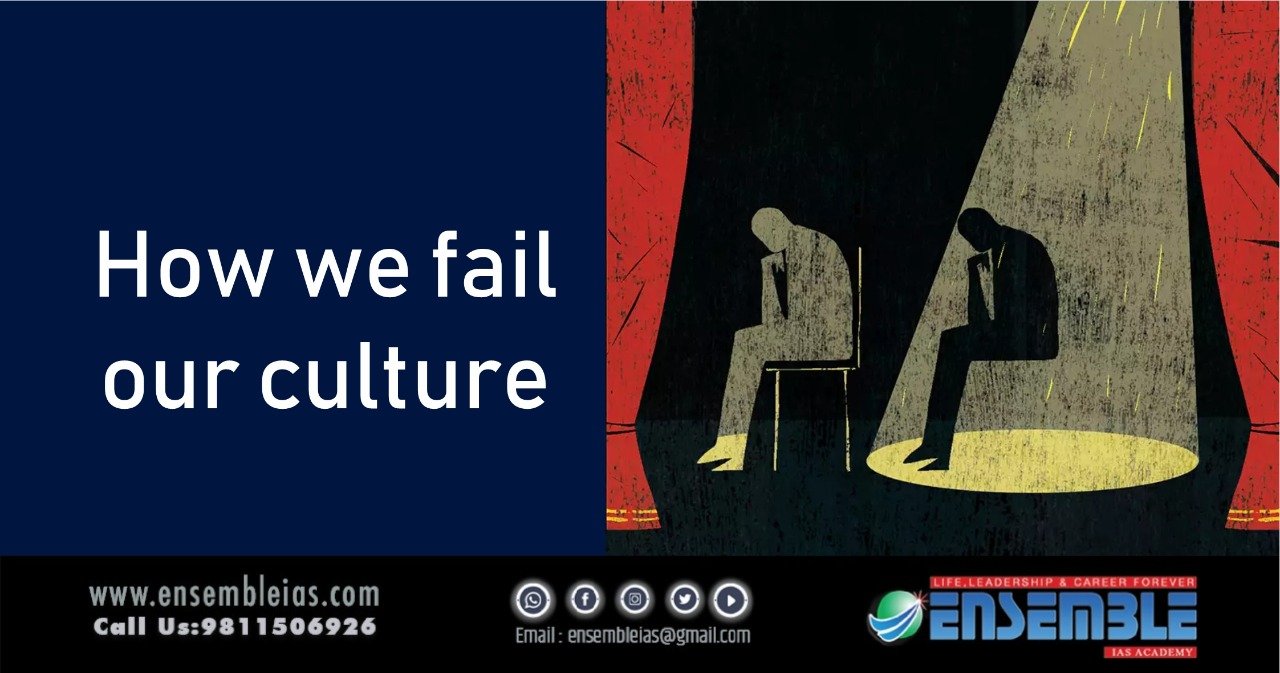How we fail our culture: India is a great civilisation. But no government makes institutional investment protecting its heritage
To buy our online courses: Click Here
The late Ram Niwas Mirdha, aesthete and politician and former chairman of the Sangeet Natak Akademi, once expressed his deep worry to me that the country is in serious danger of losing all its rasiks – those who enjoy culture and understand it. His concern was legitimate.
India must rank as one of the most unique civilisations of the world, marked by great antiquity, substantial refinements, and unprecedented audacity of thought. Why then do successive governments treat culture with such disrespect?
Take the latest Cabinet reshuffle. The new Cabinet has no full-time minister of culture. G Kishan Reddy, who has never dealt with culture but was once chairman of the Telangana Kabaddi Association, is minister of tourism, development of Northeast region, and culture.
None of his two ministers of state deal with culture fully either: one is saddled with parliamentary affairs in addition, and the other with external affairs.
Previous non-BJP governments have also invariably clubbed culture with another portfolio. The favourite combination (as now) is to hyphenate it with tourism (both major subjects) so that the besieged minister ends up doing justice to neither.
Such cavalier neglect of culture is a trifle surprising for BJP, since its leaders never tire of singing fulsome praises of our ancient heritage and the need to preserve it. ‘Bharat Mata’, shorn of its xenophobic or chauvinistic content, is essentially a civilisational construct, and needs assiduous nurturing which goes beyond verbal evangelism.
The facts speak for themselves. The ministry of culture (MoC) is inadequately budgeted, and even the meagre amount allocated is not fully spent; it is overrun by bureaucrats who rarely know anything about culture, and mostly consider it a punishment posting – a telling commentary for a country whose calling card since the dawn of time was culture.
Institutions like the Indian Council of Cultural Relations, which are meant to propagate Indian culture abroad, have little or no money beyond what is required for fixed costs; the Akademies – Sahitya, Sangeet Natak, Lalit Kala – are frankly cesspools of politicking. As of March 31 last year, 262 out of 878 posts in the Akademies were lying vacant.
Parliament’s Standing Committee on Culture pointed out that in 2010-11, the actual expenditure by the MoC as a percentage of the GDP was as low as 0.017%. What is surprising is that this pathetically low spend reduced to 0.012% in 2019-20. The allocation for the MoC in 2021 was Rs 461 crore less than the previous year, a 15% reduction. This came after a 30% mid-year downward revision of the cultural budget in 2020. Even if the impact of the Covid pandemic is taken into account, the overall figure shows that if inflation is taken into account, there has been no growth in allocations to MoC in the last five years.
Compare this with what some other countries are doing. China has built over 150 modern galleries in Beijing, along with an art district with neatly cobbled streets and rows of street side cafes. Additionally, the Chinese have invested in over a 100 museums created to world standards.
Singapore, Thailand and the Philippines are investing in a dozen state of the art museums each; Hong Kong has devised a new cultural plan worth several billion dollars; and, the UAE has earmarked over $30 billion for museums and art programmes.
When culture is not institutionally invested in, it has two unfortunate consequences. The first is cultural indifference, an unforgivable lack of interest in our own heritage. One manifestation of this is the loss of balance between popular and classical culture.
In London, Hyde Park gets thousands of people when there is a pop group performing. But, the salons for Western classical music, too, have people queuing up for tickets. In our country, even the finest classical dancers, who represent a tradition refined over thousands of years, find it difficult to fill an auditorium, even when the performance is free.
Our National Gallery of Modern Art, with one of the richest collections of contemporary art, gets 30,000 visitors annually. The Museum of Modern Art in New York, and the Louvre in Paris, get 2.5 million, and the Tate in London 4 million.
The second consequence is cultural xenophobia based on cultural illiteracy. When people don’t know enough about their own culture, they are easily swayed towards unwarranted cultural militancy to compensate for their lack of knowledge.
This ties up with a vision of exclusion that has inimical political consequences. Culture then becomes a slogan, in the hands of the uninformed, doing unforgivable damage to the highly cerebral and sophisticated nature of our cultural heritage.
Also Read: Population (under) control
Today, the land of the Natyashastra, Ajanta, and the ateliers of the Mughals, has no world-class galleries, few curators, shabby art auditoriums, neglected museums, crumbling monuments, almost no serious discussion on art and culture, and worst of all, no committed audiences. Artists of great talent languish in neglect, deprivation or even penury.
While there is no dearth of tributes to India’s great cultural heritage, the blunt truth is that modern India has failed to reclaim that legacy. BJP, which is quick to appropriate that legacy, must do much more than high decibel lip service to India’s civilisational credentials.





